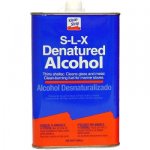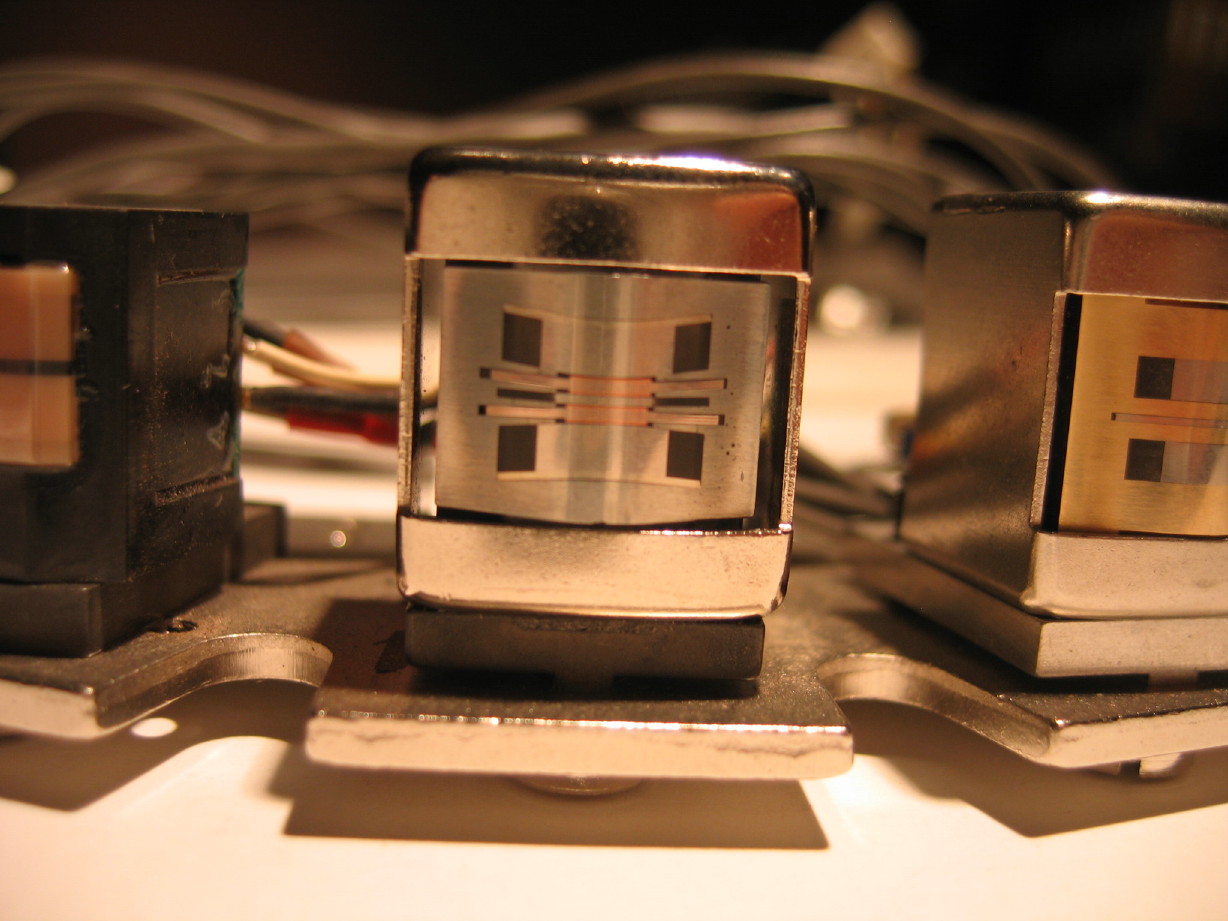You are using an out of date browser. It may not display this or other websites correctly.
You should upgrade or use an alternative browser.
You should upgrade or use an alternative browser.
Akai Glass & X'TAL Ferrite Head's
- Thread starter Marconiex
- Start date
Tim Gillett
Banned
Definitely not recommended. Try Isopropanol.
B
Beck
Guest
Keep acetone far, far away from any tape deck! I wouldn’t use it on anything that’s attached to a working machine. Maybe on certain individual metal parts while restoring a deck. Definitely not on tape heads of any type!
Alcohol is the best. Denatured alcohol, or 91% or higher Isopropyl have always been most common. The higher percentage the better for Isopropyl, but higher than 91% may be hard to find in some areas. 95% or 99% if you can find it. Some pharmacies keep the higher percentage stuff behind the counter, so you have to ask for it. Denatured alcohol can be found at any hardware store, like Lowes, Home Depot, etc. It comes in a can that looks like acetone, but never use acetone.
This is the kind I've used for ages...
Klean-Strip S-L-X Denatured Alcohol

By the way, I've used this for the glass heads on my Akai GX-77 since about 1990. It's true what they say about those heads... they last forever. I bought it in 1988 and still runs like new.
Alcohol is the best. Denatured alcohol, or 91% or higher Isopropyl have always been most common. The higher percentage the better for Isopropyl, but higher than 91% may be hard to find in some areas. 95% or 99% if you can find it. Some pharmacies keep the higher percentage stuff behind the counter, so you have to ask for it. Denatured alcohol can be found at any hardware store, like Lowes, Home Depot, etc. It comes in a can that looks like acetone, but never use acetone.
This is the kind I've used for ages...
Klean-Strip S-L-X Denatured Alcohol

By the way, I've used this for the glass heads on my Akai GX-77 since about 1990. It's true what they say about those heads... they last forever. I bought it in 1988 and still runs like new.
Last edited:
miroslav
Cosmic Cowboy
It's true what they say about those heads... they last forever. I bought it in 1988 and still runs like new.
I had two AKAI decks with the glass heads...a 4-track and a 2-track. The heads were fantastic.
Wonder why that head technology was not adopted for more pro-decks...for the wider head formats?
jpmorris
Tape Wolf
I had two AKAI decks with the glass heads...a 4-track and a 2-track. The heads were fantastic.
Wonder why that head technology was not adopted for more pro-decks...for the wider head formats?
I asked my Dad that very question, and he reckoned that the glass heads would crack and and shatter if they were driven too hard (for recording). It's not impossible - it's likely to have very different thermal expansion properties than a conventional metal head.
Marconiex
New member
I had two AKAI decks with the glass heads...a 4-track and a 2-track. The heads were fantastic.
Wonder why that head technology was not adopted for more pro-decks...for the wider head formats?
I see all of these people selling there Pioneer RT-909's and other makes on eBay and I ask myself "What's the point"? I have two RT-909's that I'm ready to trash because one stopped working and the other is starting to give me problems. Yeah sure I can get them repaired but like I said "what's the point of spending good money on repairs if the heads are worn out"?
So what I did instead of wasting money on repairing the Pioneer's, I bought two near mint condition Akai GX 635D's instead and the heads still look brand new! Plus they are direct-drive machines! No more wasted money on drive belts either!
I predict that in the future there are mostly going to be Akai GX decks left on the planet. Most all other makes will be trashed because of the "can't get new heads" problem.
Last edited:
sweetbeats
Reel deep thoughts...
I asked my Dad that very question, and he reckoned that the glass heads would crack and and shatter if they were driven too hard (for recording). It's not impossible - it's likely to have very different thermal expansion properties than a conventional metal head.
The glass heads did have issues because they were brittle. A peakier profile on the face of the head was more problematic, and if a wear groove DID develop and they needed relapping it was/is difficult at best to do so because of the brittle nature.
You see the material used more often on erase heads partly because of the much flatter profile...they last a long time.
John French is a wealth of knowledge on this stuff.
B
Beck
Guest
I had two AKAI decks with the glass heads...a 4-track and a 2-track. The heads were fantastic.
Wonder why that head technology was not adopted for more pro-decks...for the wider head formats?
They used them up to 1/2" heads with 14 tracks. The Akia MG1212 and MG1214 1/2" multitracks had Crystal Ferrite Super GX heads. How ironic though that they used a proprietary tape cassette that is almost impossible to find. Had they used betamax as they were going to at first you’d see a lot more of these machines still in use.
It was estimated that the heads would hold up for over 17 years of continuous 24/7 operation and that estimate has pretty much been proven over time. No one has ever really used them that much, so you don’t find those heads worn out like you do traditional heads.
I would like to find one of the three Akai machines that used these heads, unusable because of no available tape, but with good heads. Then find a way to mount them on a Tascam MSR-16 or Fostex E16/G16. The Akai machines were officially ½” 12-track, but the heads were actually 14-track, with two tracks intended as sync and control tracks. I can get most of what I do done with 8-track, but I always thought 12-track was the sweet spot for those times when I could use a couple more, plus an additional one for sync. The ½” Akai heads come closer to my ideal for track count, track width, performance and durability than anything else I know of.
jpmorris
Tape Wolf
I would like to find one of the three Akai machines that used these heads, unusable because of no available tape, but with good heads. Then find a way to mount them on a Tascam MSR-16 or Fostex E16/G16. The Akai machines were officially ½” 12-track, but the heads were actually 14-track, with two tracks intended as sync and control tracks. I can get most of what I do done with 8-track, but I always thought 12-track was the sweet spot for those times when I could use a couple more, plus an additional one for sync. The ½” Akai heads come closer to my ideal for track count, track width, performance and durability than anything else I know of.
Ooh, I like that idea. Are all the tracks the same width, or are the sync/control tracks thinner?
B
Beck
Guest
I believe all 14 tracks are on the main record/play head and are all the same width. I finally found a couple old brochures for the Akai units that I’ve had since 1986 in a folder. I was hoping there would be a close up of the heads, but no such luck. I haven’t been able to find a front on pic of the heads on the web either, but I can see they would be really difficult to access for pics unless the machine was apart. The two brochure I have cover the MG1212, MG1214 and MG14D, which is the rack version with no mixer attached. I have a friend who still owns one of these. I’ll see if he knows for sure how the heads are configured and post that info here. I haven’t seen the headstack on one of these machines since the late 80’s.
I’ve always wished for more machines with a narrower time code track so you don’t end up wasting a full audio track for synchronization. A track as narrow as a typical 4-track cassette is more than plenty for sync tone. Teac made a 9-track head long time ago for data logging decks, but I doubt the head would be suitable for high fidelity music recording. Maybe I’m a little obsessive about wanting an even number of tracks left over when using one for syncing. That could be it.
I’ve always wished for more machines with a narrower time code track so you don’t end up wasting a full audio track for synchronization. A track as narrow as a typical 4-track cassette is more than plenty for sync tone. Teac made a 9-track head long time ago for data logging decks, but I doubt the head would be suitable for high fidelity music recording. Maybe I’m a little obsessive about wanting an even number of tracks left over when using one for syncing. That could be it.

sweetbeats
Reel deep thoughts...
Yeah, the T/C track on all of Teac's 1/4" halftrack + timecode heads is a scrawny little sliver in between the NAB audio cores...nothing but what's needed.


B
Beck
Guest
Yeah, the T/C track on all of Teac's 1/4" halftrack + timecode heads is a scrawny little sliver in between the NAB audio cores...nothing but what's needed.

Yep, exactly! Now and then I look at the 8-track head on my TSR-8 and think about figuring a way to add a small head that would line up in between tracks for sync. It would take some doing and the crosstalk would probably make it rough, but a guy can dream.

